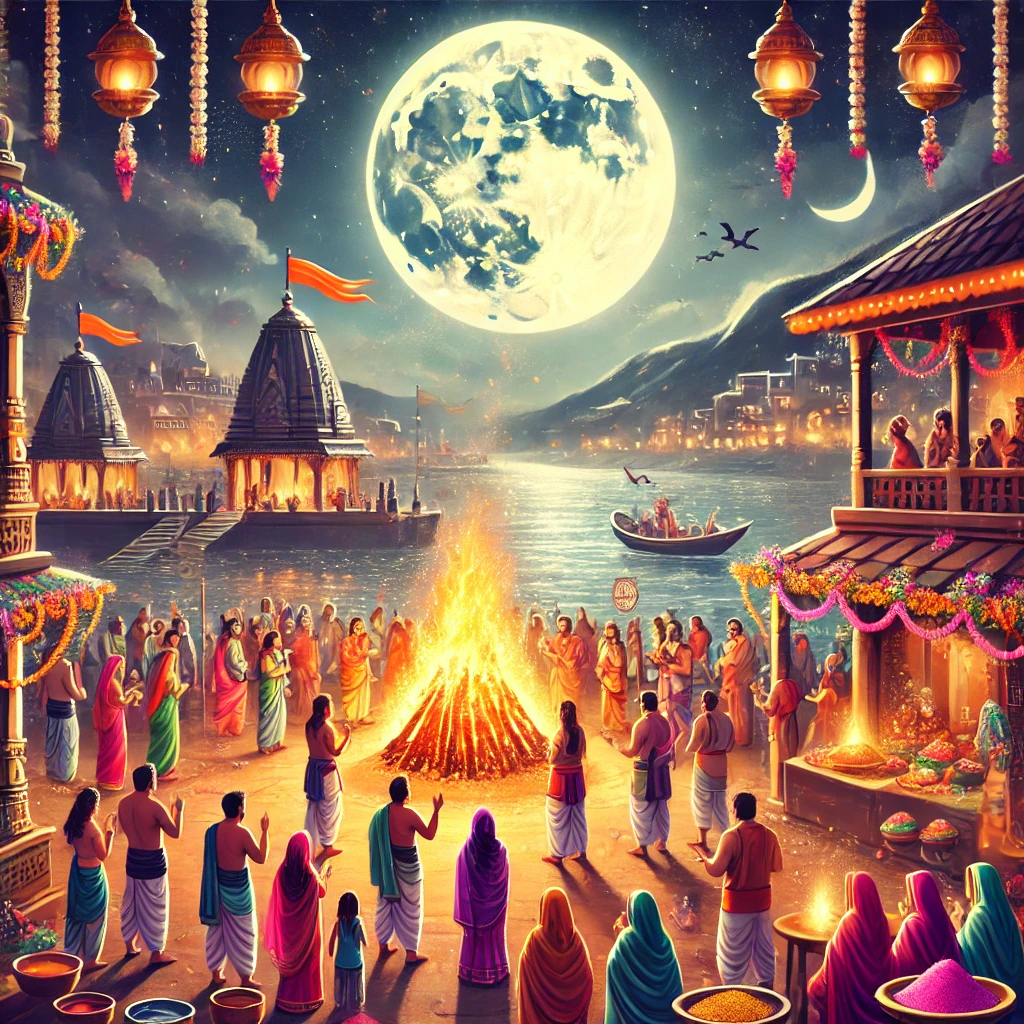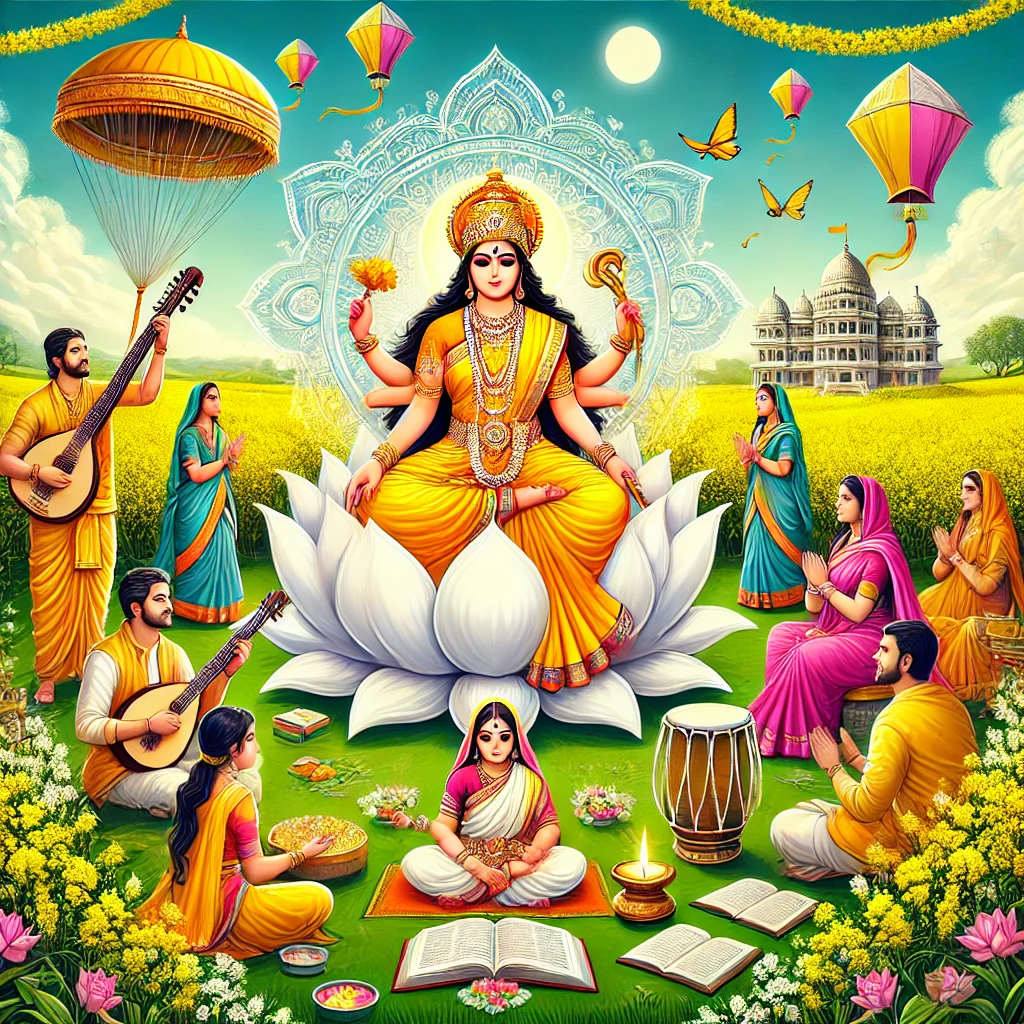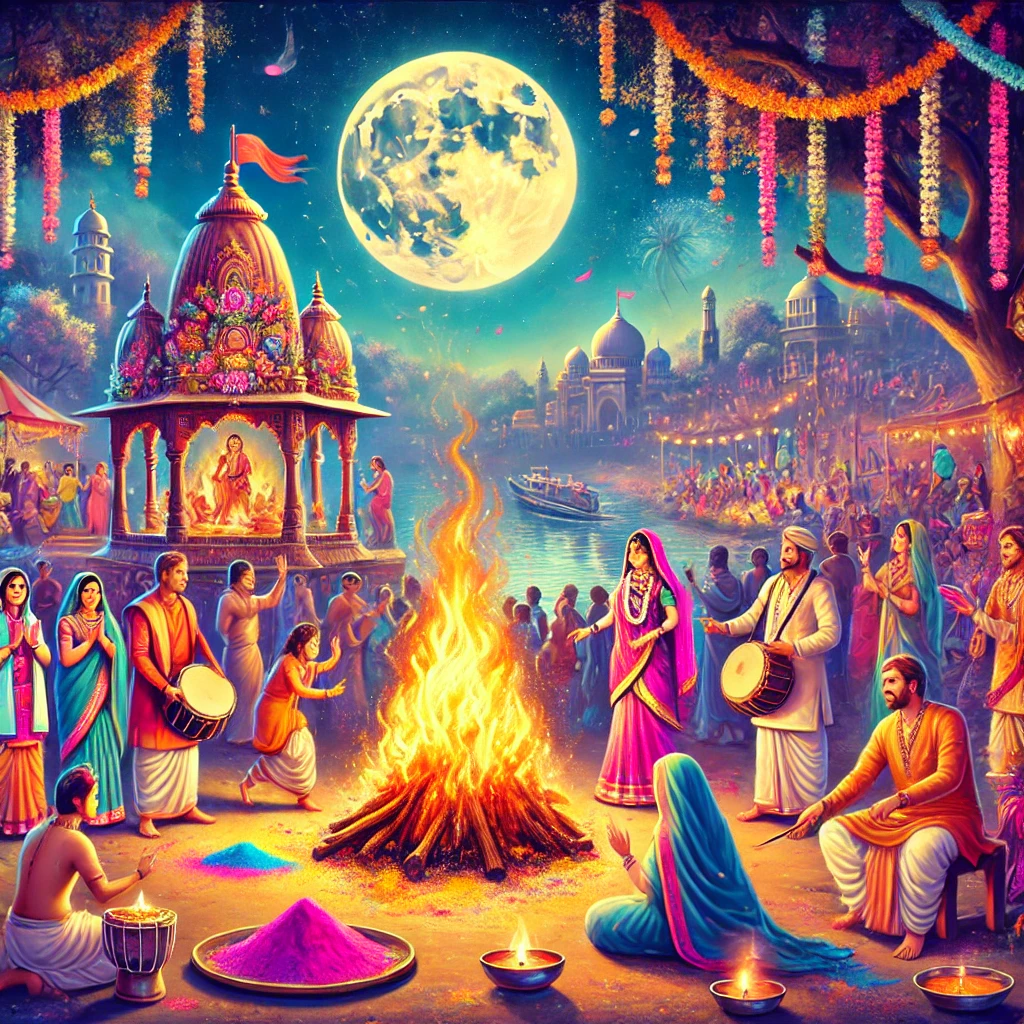Vasanta Purnima
Introduction
Every event in India has spiritual, cultural, and social meaning; the country is a place of celebrations. Of these, Vasanta Purnima is among the most honored and lucky full moon days. Deep ingrained in Hindu customs and mythology, this celebration commemorates the coming of Vasanta Ritu (spring season).
Devotedly observed with prayers, fasting, and social celebrations is Vasanta Purnima. It also falls around several regional festivities such Lakshmi Jayanti, Holi, and Dol Purnima. This holy full moon is thought to be carrying divine energies, hence it is the perfect moment for spiritual uplifting and success.
Let us investigate the importance, stories, customs, and celebrations connected with Vasanta Purnima.
What is Vasanta Purnima?
The full moon day of the Hindu month Phalguna, which happens during the vivid season of spring, is Vasanta Purnima Along with religious observances, this celebration honors the beauty of nature, blossoming flowers, and new vitality.
Hindus hold that on this day, pujas, meditation, and charity help to bring blessings and serenity. The celebration also links with the divine love of Radha-Krishna, the victory of good over evil, and the need of virtue.
Spiritual and Astrological Importance
- Spiritual Energy: Considered as a period of great vitality and divine presence is the full moon. It is thought that meditating on Vasanta Purnima and chanting mantras improve inner tranquility and knowledge.
- Seasonal Change: The transition from winter to spring signifies renewal, prosperity, and new beginnings.
- Holika Dahan Connection: This full moon is closely linked with Holika Dahan, symbolizing the victory of faith and devotion over negativity.
- Astrological Significance: The location of the full moon in particular zodiac signs improves its influence on human emotions, so it is a perfect time for spiritual pursuits.
Rituals and Traditions of Vasanta Purnima
Observed with holy rites and ceremonies in several parts of India, Vasanta Purnima Some of the main customs consist in:
1. Fasting and Worship
- Devotees observe a day-long fast to seek divine blessings.
- Special prayers and pujas for Lord Vishnu, Lord Shiva, and Radha-Krishna are performed.
- People visit temples and offer milk, honey, and flowers to deities.
2. Holika Dahan
- The night before Vasanta Purnima is celebrated as Holika Dahan, a ritual where bonfires are lit to mark the victory of devotion over evil.
- This tradition comes from the story of Prahlada and Holika, emphasizing faith in God.
- Families and communities gather to burn the symbolic pyre and pray for prosperity and happiness.
3. Dol Purnima (Celebrated in Bengal and Odisha)
- In regions like West Bengal and Odisha, Vasanta Purnima is known as Dol Purnima.
- The festival honors Lord Krishna and Radha through colorful processions, music, and dance.
- Devotees apply gulal (colored powders) to idols and celebrate with joy and devotion.
4. Charity and Helping the Needy
- Donating food, clothes, and money to the poor is considered very auspicious.
- Feeding cows, Brahmins, and saints is believed to bring good fortune.
5. Taking a Holy Dip
- Devotees take a sacred bath in rivers like Ganga, Yamuna, and Godavari.
- Bathing in these holy waters on Vasanta Purnima is believed to wash away sins and grant divine blessings.
Mythological Legends Associated with Vasanta Purnima
1. Legend of Prahlada and Holika
The legend of Prahlada and Holika is among the most well-known connected to Vasanta Purnima. Young devotee of Lord Vishnu Prahlada suffered under the demon king Hiranyakashipu. Holika, the king’s sister, got a boon rendering her impervious to fire. She got Prahlada seated on her lap inside a fire. But Holika burned while Prahlada survived unscathed because of his relentless loyalty to Vishnu. Celebrated as Holika Dahan is this triumph of faith against evil.
2. Birth of Chaitanya Mahaprabhu
Celebrated as the birth anniversary of Sri Chaitanya Mahaprabhu, the saint who launched the Bhakti movement, Vasanta Purnima is also Strong devotee of Lord Krishna, he promoted devotional singing (Kirtan) as means of spiritual illumination.
3. The Legend of Lord Shiva and Kamadeva
Hindu legend holds that the God of Love, Kamadeva, tried to rouse Lord Shiva from intense meditation. Angry Shiva unleashed his third eye and scorched Kamadeva to ashes. This occasion on Vasanta Purnima emphasizes the need of self-control and dedication.
Celebrating Vasanta Purnima at Home
Even if you are unable to visit temples or pilgrimage sites, you can celebrate Vasanta Purnima at home with simple yet meaningful rituals:
- Wake up early and take a bath with sacred water or herbs.
- Decorate your home with flowers and rangoli.
- Offer prayers to Lord Vishnu, Shiva, or Radha-Krishna.
- Observe a fast and break it with simple sattvic food.
- Recite Vishnu Sahasranama or Shiva Stotras.
- Participate in Holika Dahan with family and friends.
- Perform acts of charity and kindness.
- Play Holi with natural colors and spread joy.
Conclusion
Vasanta Purnima celebrates life, environment, and spirituality as much as a religious holiday. It is a really unique moment when spring arrives, the triumph of faith over evil, and the holy tales connected with this day.
Following Vasanta Purnima’s customs helps one to welcome serenity, wealth, and optimism into their life. This festival reminds us of the beauty of faith, dedication, and rebirth whether via prayers, fasting, or social events.
Let us welcome the season of gladness and fresh starts with open hearts, therefore honoring the sacredness of Vasanta Purnima. May this celebration grant to all divine favors, health, and pleasure! Happy Vasanta Purnima.



